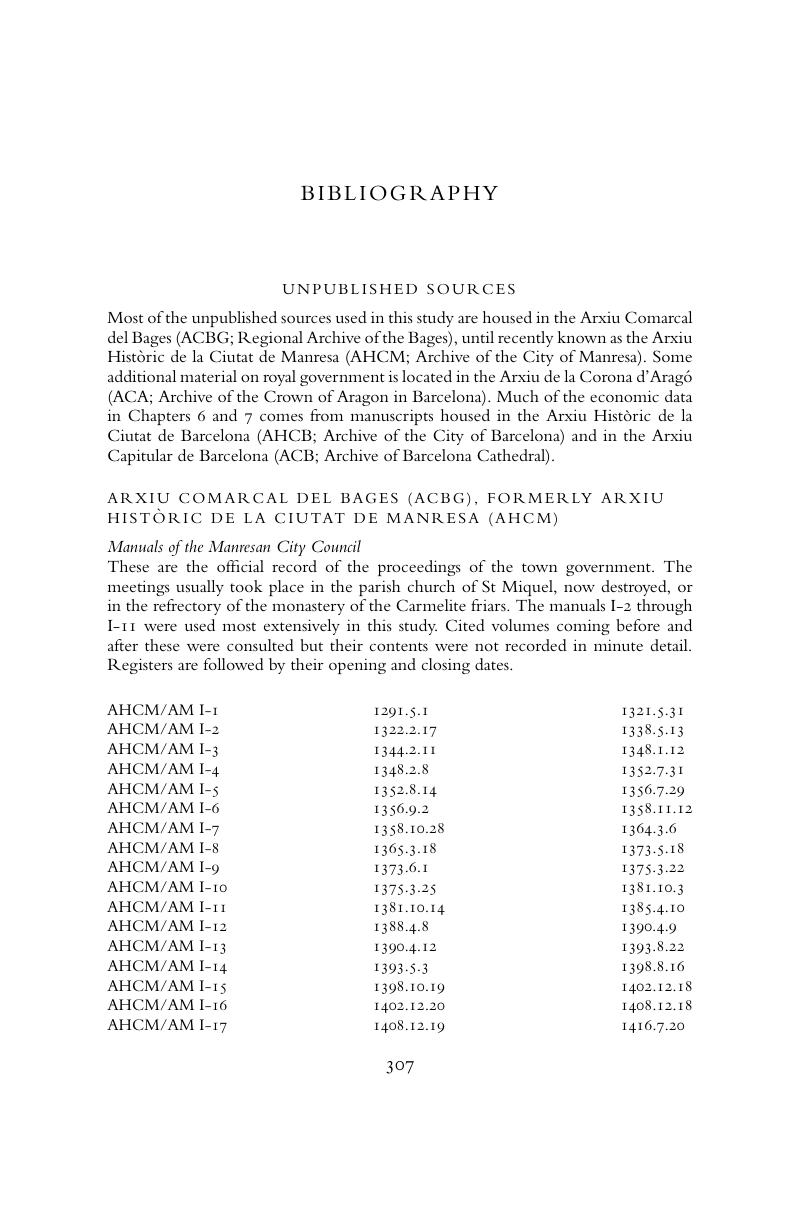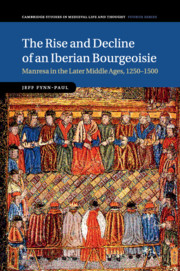Book contents
- Cambridge Studies in Medieval Life and ThoughtThe Rise and Decline of an Iberian Bourgeoisie
- Cambridge Studies in Medieval Life and Thought Fourth Series
- The Rise and Decline of an Iberian Bourgeoisie
- Copyright page
- Contents
- Illustrations
- Tables
- Book part
- Glossary
- Glossary
- Notes on Citations, Money, Names, and Accentuation
- The Kings of Catalonia-Aragon
- Chapter 1 Introduction
- Part I Politics
- Part II Economy
- Bibliography
- Index
- References
Bibliography
Published online by Cambridge University Press: 05 November 2015
- Cambridge Studies in Medieval Life and ThoughtThe Rise and Decline of an Iberian Bourgeoisie
- Cambridge Studies in Medieval Life and Thought Fourth Series
- The Rise and Decline of an Iberian Bourgeoisie
- Copyright page
- Contents
- Illustrations
- Tables
- Book part
- Glossary
- Glossary
- Notes on Citations, Money, Names, and Accentuation
- The Kings of Catalonia-Aragon
- Chapter 1 Introduction
- Part I Politics
- Part II Economy
- Bibliography
- Index
- References
Summary

- Type
- Chapter
- Information
- The Rise and Decline of an Iberian BourgeoisieManresa in the Later Middle Ages, 1250–1500, pp. 307 - 344Publisher: Cambridge University PressPrint publication year: 2015



